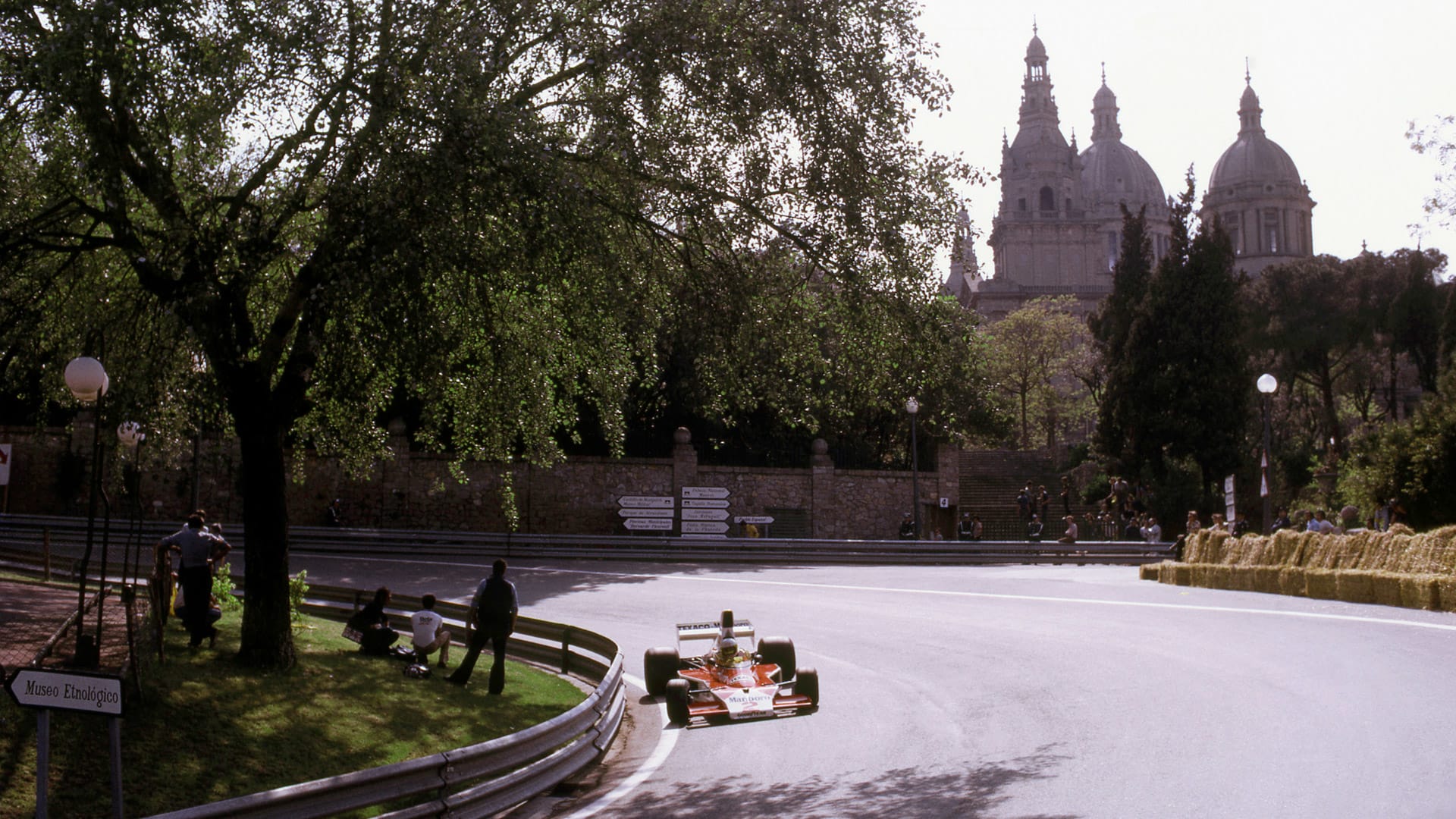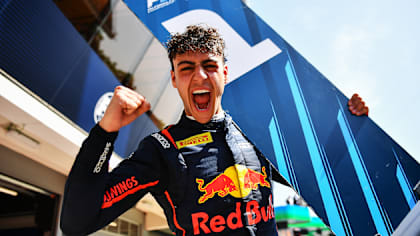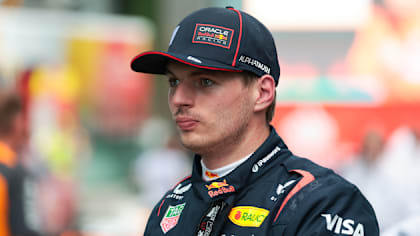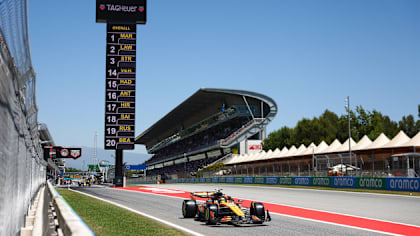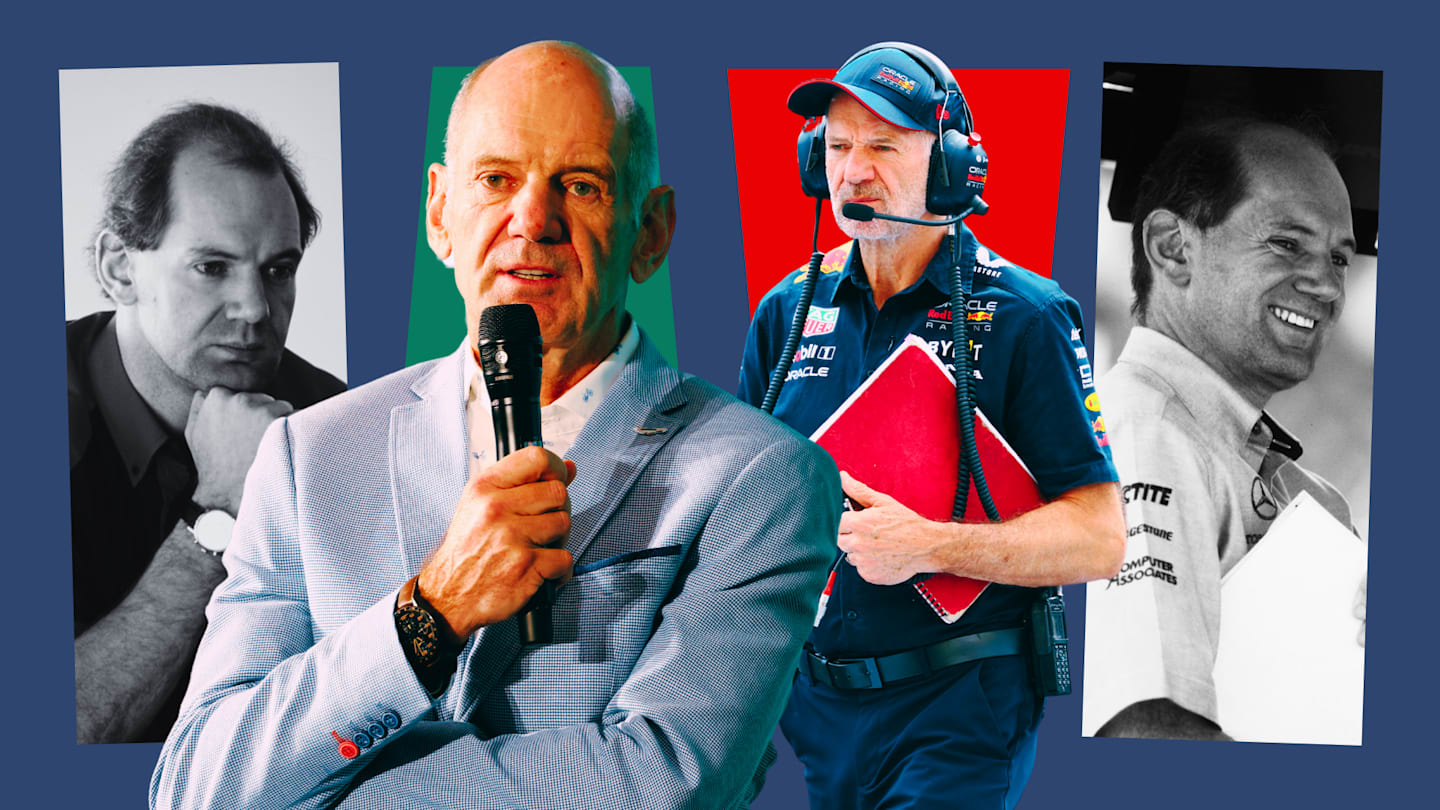
News
From March to Red Bull – How long did it take Newey to make an impact at his previous F1 teams?

Share

Adrian Newey will make the next move in his trophy-filled career when he switches from Red Bull to Aston Martin in early 2025. But how quickly did success come at his previous teams? How important were regulation changes? And what about the people working alongside him? F1.com takes a closer look…
March/Leyton House
Newey’s first experience of F1 came with Fittipaldi Automotive in the early 1980s, fresh from his Aeronautical Engineering university graduation, but it was not until much later in the decade – via stints in sportscars and the American CART championship – that he oversaw the design of a Grand Prix car.
READ MORE: Adrian Newey to join Aston Martin as Silverstone squad win race to sign F1 design guru
It was an encouraging start with the post-ground effect era, Leyton House-liveried March 881, which raced through the 1988 season and started the 1989 campaign. Mauricio Gugelmin and Ivan Capelli both took the non-turbocharged car to the podium, with the latter also raising eyebrows when he briefly grabbed the lead from McLaren’s Alain Prost in Japan.
Then came a rollercoaster period: the CG891 – recognising late team chief Cesare Gariboldi – struggled to finish a race in 1989; and the CG901 began 1990 well off the pace amid wind tunnel correlation issues before an upgrade package in France propelled it into unlikely contention.
While he was effectively fired in the summer of 1990, with that mixed bag of car performances and results on his CV, Newey took a valuable life lesson away from his time at the team.

Newey’s first F1 car, the March 881, which was used through 1988 and for part of the 1989 season
Asked earlier this year about the speculation in the press ahead of his move to Aston Martin being confirmed, Newey said: “I don’t really read social media or I don’t particularly read magazines – that’s kind of something I stopped doing a long time ago.
“Back in my Leyton House days, the first car I did was in 1988, [and] that was a good little car. Then in ’89 we completely messed it up, so I went from being this new hero in the F1 paddock on the engineering side to the idiot who was a one-hit wonder.”
Williams
Newey would rid himself of that one-hit wonder label when he was snapped up by Williams for 1991 though, slotting in as Chief Designer alongside established Technical Director Patrick Head in what would become a potent combination.
Williams were regularly winning races with the FW14 by mid-season to pile the pressure on reigning world champions McLaren, before the 1992-spec FW14B – featuring refined aerodynamics from Newey and groundbreaking technology such as active suspension and traction control – blew the competition away.
Indeed, Nigel Mansell scored a then-record nine victories in 1992 to comfortably secure the drivers’ title he had long been craving, while team mate Riccardo Patrese’s efforts in the sister car also earned Newey his first F1 constructors’ crown.
What makes Adrian Newey so good?
Over the next five years, Williams’s Newey-designed cars won an incredible seven of the 10 championships on offer, albeit with their successes clouded by the tragic passing of Ayrton Senna following an accident at the 1994 San Marino Grand Prix.
Newey and his team navigated various rule changes across this period, including adjustments to car widths and lengths, wing heights and sizes, tyre sizes, stricter crash tests and the ban on electronic driver aids implemented in that aforementioned 1994 season.
READ MORE: An innovator and trendsetter – Adrian Newey’s greatest F1 contributions
The tallies from this breakthrough period in his career? No fewer than 78 pole positions and 59 race victories, with Alain Prost, Damon Hill and Jacques Villeneuve the other drivers’ champions alongside Mansell.
McLaren
As those wins and titles rolled in, Newey found himself ready to take the next step. Ahead of the 1997 season, the Briton accepted the advances of McLaren, where he would assume the Technical Director position held by Head at Williams.
He joined too late to shape a 1997 design that bagged sporadic wins, including a one-two in that Jerez finale, and instead focused on laying the foundations for the 1998 MP4-13 built around new ‘narrow track’ regulations and grooved tyres.
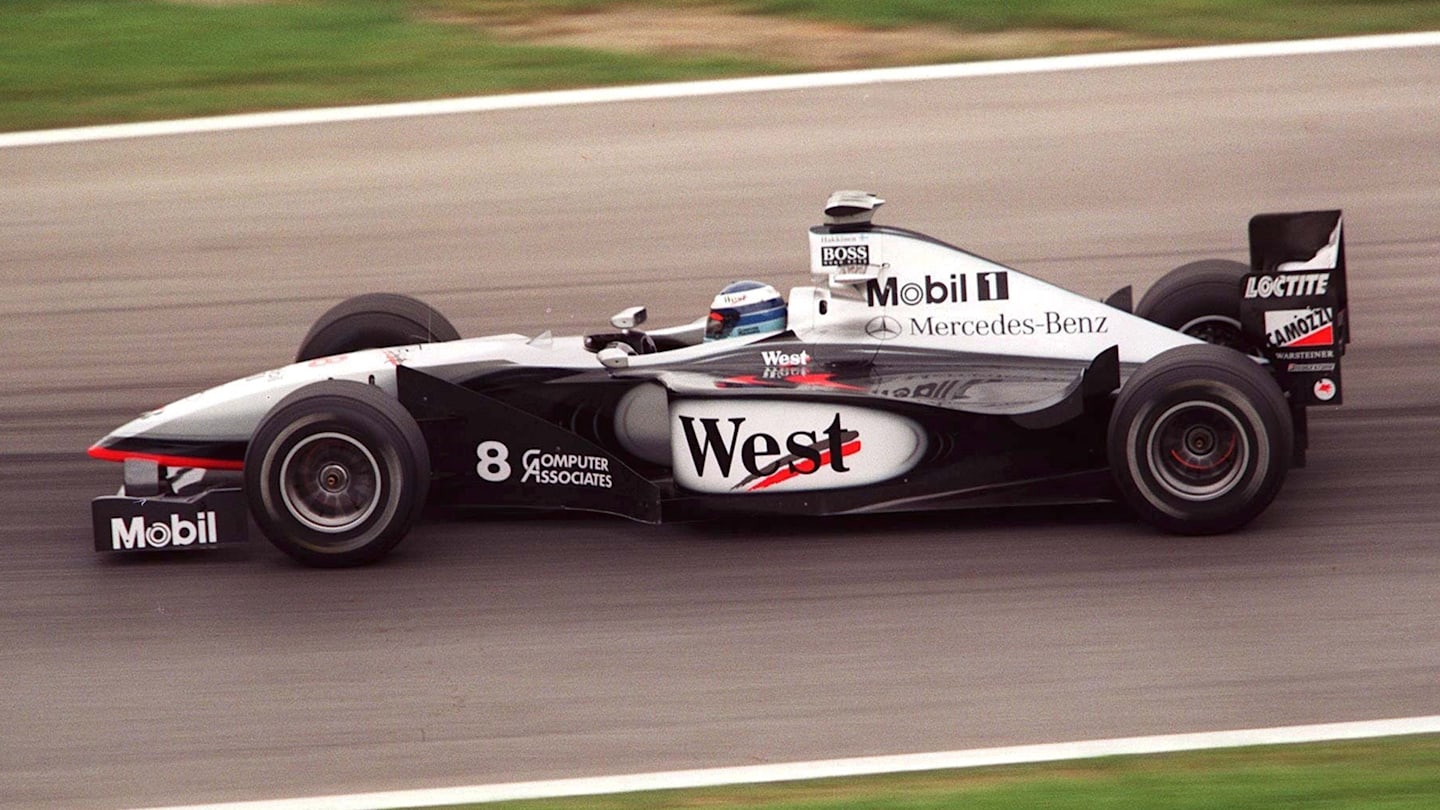
Newey tasted title glory with a second F1 team shortly after swapping Williams for McLaren
Newey hit the ground running once more, with his class-of-the-field design landing McLaren’s first drivers’ and constructors’ championships in seven years via Mika Hakkinen and David Coulthard – and, to this day, the last time the Woking-based team have claimed the latter prize.
“All you can do is look at teams’ performances and try and find the common denominator, and you’d have to say that without him Williams aren’t doing so well, and with him McLaren are doing better than they were last year,” Newey’s former colleague, Hill, had neatly summed up to ITV F1 early in the 1998 season.
For 1999, there were further rule changes, including an additional groove being added to the front tyres, with honours this time split between McLaren and rivals Ferrari – Hakkinen adding a second drivers’ title and the Scuderia edging the constructors’ battle.
In the Ferrari-controlled years that followed, Newey-designed McLarens would secure plenty more race wins but no more titles. Kimi Raikkonen came close in 2003 and challenged again in 2005 – versus a rising Renault force – when new aerodynamic regulations were introduced, only for unreliability to undo a lot of their hard work.
There were many other names to thank across that ‘98/’99 winning period, including the likes of Chief Designer Neil Oatley, Engineering Director Steve Nichols and Head of R&D Paddy Lowe, who had overseen the development of the highly effective active suspension system that graced Newey’s FW14B and FW15C.
TECH TALK – The evolution of Adrian Newey's F1 cars
But as McLaren’s former Head of Vehicle Design, Matthew Jeffreys, recently told F1.com: “Adrian goes to the nth degree to get every little bit of performance from every area of the car. In doing that, he pushed us into areas which were a little bit outside of our comfort zones, so he made us consider things and do things which we wouldn’t necessarily consider doing.”
Red Bull
By the mid-noughties, Newey felt the time was right for a fresh challenge. Rather than opting for another established team, his next move would be to a new one when he joined Red Bull as Chief Technical Officer – former Williams and McLaren driver Coulthard and boss Christian Horner playing their part in luring him to an outfit that had not won a single Grand Prix in their current guise.
As per McLaren, Newey arrived unable to influence the car that had just been finalised, the 2006-spec RB2, meaning 2007 and 2008 would bring the first designs from his drawing board. Across relatively stable rulesets, they achieved an increasingly steady flow of points, as well as the odd podium, but the front of the field still seemed far away.
That was until 2009, when overhauled regulations – covering a ban on most aerodynamic devices beyond front and rear wings, changes to front wing and rear wing parameters, and slick tyres returning – presented a golden opportunity to cause an upset.
There was good and bad news for Red Bull that year. On the one hand, they shot up the order to claim their first pole positions and race wins. On the other hand, a rival outfit had one more trick up their sleeve in Brawn GP and their double diffuser innovation – a variation of which Williams and Toyota had also designed.
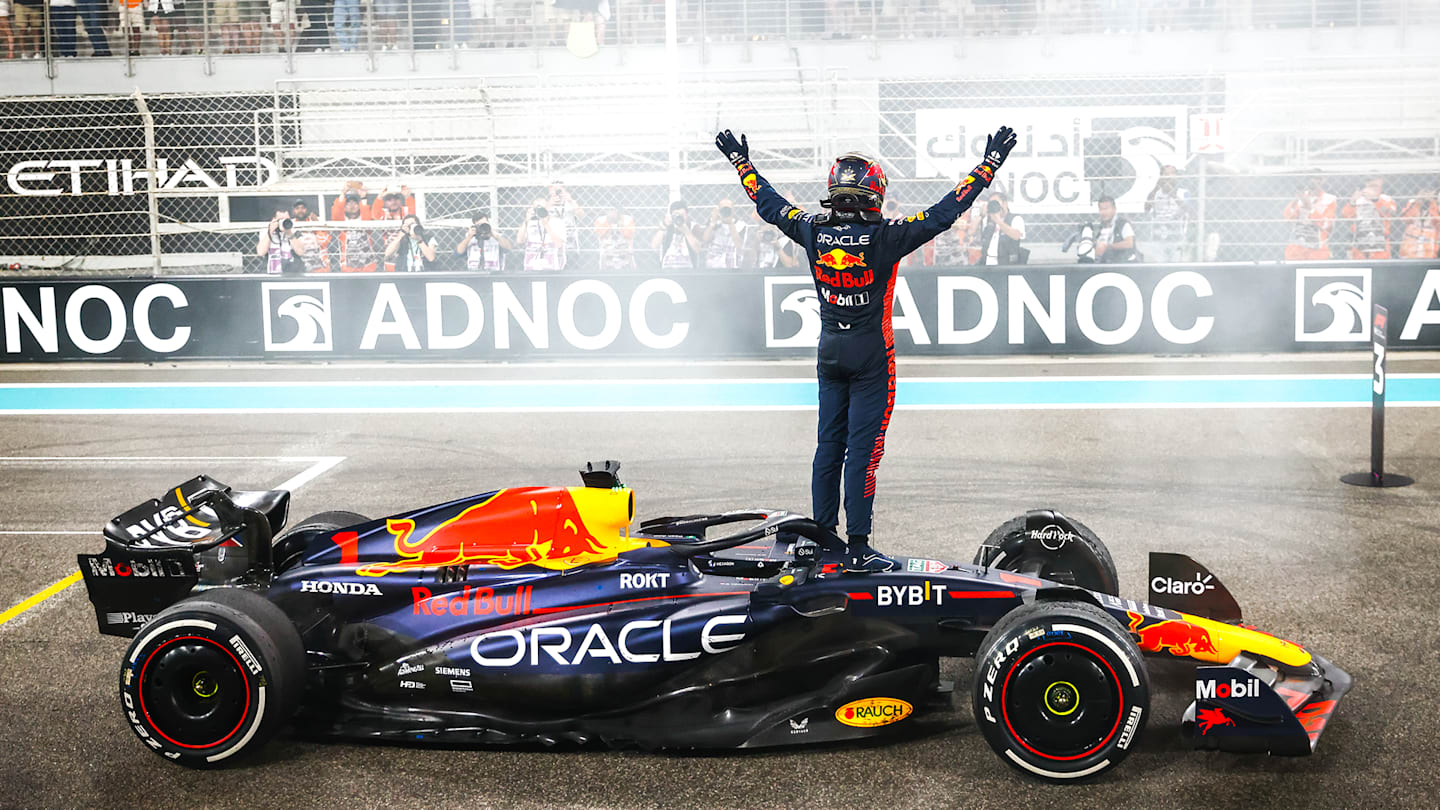
Red Bull came close to stringing together a perfect 2023 season with Newey’s RB19
It proved to be the warm-up to a sensational run from 2010 to 2013, where Newey’s cars – adapting to further rule changes such as bans on in-race refuelling, double diffusers and the exhaust-blown diffusers Red Bull had pioneered – collected eight successive drivers’ and constructors’ crowns in the hands of Sebastian Vettel and Mark Webber.
After so much success, the arrival of F1’s turbo-hybrid era in 2014 – and Renault’s engine struggles – finally ended that winning cycle. While a much-improved Mercedes put every title out of reach through 2020, Newey and his team – which included long-time design and aero chiefs Rob Marshall and Dan Fallows – at least managed to produce a race-winning car in every season bar 2015.
EXCLUSIVE: Newey on the RB17 hypercar, his ‘amazing ride’ at Red Bull and what’s next
Then, in 2021, a couple of years after taking on Honda power units, one of the most gripping campaigns in F1 history saw a revitalised Red Bull go head-to-head with Mercedes for both championships – Max Verstappen dramatically coming out on top in the Abu Dhabi finale to give Newey and his team their first title since 2013.
In the background, Newey had been drawing on some experience at the start of his F1 career to prepare for the then-incoming ground effect regulations. The results would be devastating. Across 2022 and 2023, Red Bull won a whopping 38 out of 44 races – including all but one in the latter season.
Aston Martin awaits
While 2024 started in similar fashion, Newey decided to tender his resignation at Red Bull early in the season after almost two decades on board, and take time to ponder what would come next – with a move to another F1 team, exploring different categories or even sailing into retirement seen as viable options.
Adrian Newey moves to Aston Martin
In the end, Newey settled on a Managing Technical Partner and shareholding combination at Aston Martin where, in the words of ambitious owner Lawrence Stroll, he is “the biggest part of the puzzle” as the Silverstone-based team bid to become a title-winning force.
Newey will have access to some of the finest facilities and technology in F1 at Aston’s new Technology Campus, as well as being able to brainstorm with a sizeable group of established designers and engineers such as Technical Director and former colleague Fallows and incoming F1 Chief Technical Officer Enrico Cardile from Ferrari.
That’s not to mention a two-time world champion driver in Fernando Alonso, who is hungrier than ever to get back to winning ways and add to the pair of world titles he achieved with Renault in 2005 and 2006.
Alonso and the rest of the Aston Martin organisation will be hoping that Newey can already trigger a positive change through 2025, with his new job officially starting on March 1, but the more obvious target is 2026 and the sweeping changes to both the aerodynamic and power unit regulations.
As covered above, history shows us that more often than not, teams boasting Newey’s talents soon deliver the goods.
Newey’s title-winning record
| Season | Drivers’ | Constructors’ | Car model |
|---|---|---|---|
| 1992 | Nigel Mansell | Williams | FW14B |
| 1993 | Alain Prost | Williams | FW15C |
| 1994 | N/A | Williams | FW16 |
| 1996 | Damon Hill | Williams | FW18 |
| 1997 | Jacques Villeneuve | Williams | FW19 |
| 1998 | Mika Hakkinen | McLaren | MP4/13 |
| 1999 | Mika Hakkinen | N/A | MP4/14 |
| 2010 | Sebastian Vettel | Red Bull | RB6 |
| 2011 | Sebastian Vettel | Red Bull | RB7 |
| 2012 | Sebastian Vettel | Red Bull | RB8 |
| 2013 | Sebastian Vettel | Red Bull | RB9 |
| 2021 | Max Verstappen | N/A | RB16B |
| 2022 | Max Verstappen | Red Bull | RB18 |
| 2023 | Max Verstappen | Red Bull | RB19 |
YOU MIGHT ALSO LIKE
Report F2: Lindblad dominates in Barcelona to claim Feature Race victory for Campos Racing

Video RACE START: Watch the getaway in Spain as Piastri keeps the lead while Norris loses out to Verstappen
News Verstappen keen to ‘see what we can do’ from P3 on grid in Spain as he admits McLaren will be ‘tough to beat’
FeatureF1 Unlocked Max vs McLaren (again) and Hamilton in the hunt – What To Watch For in the Spanish GP
